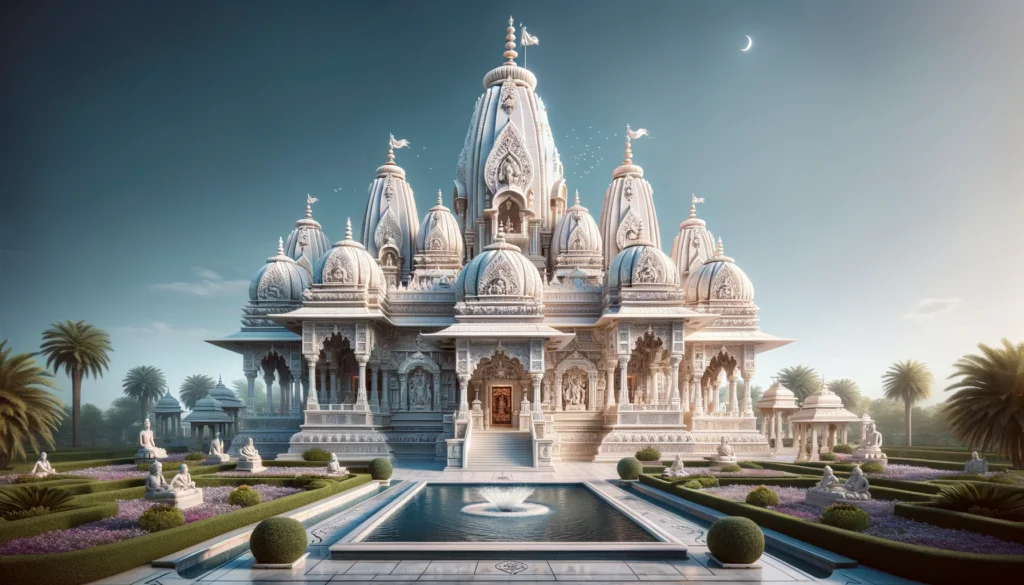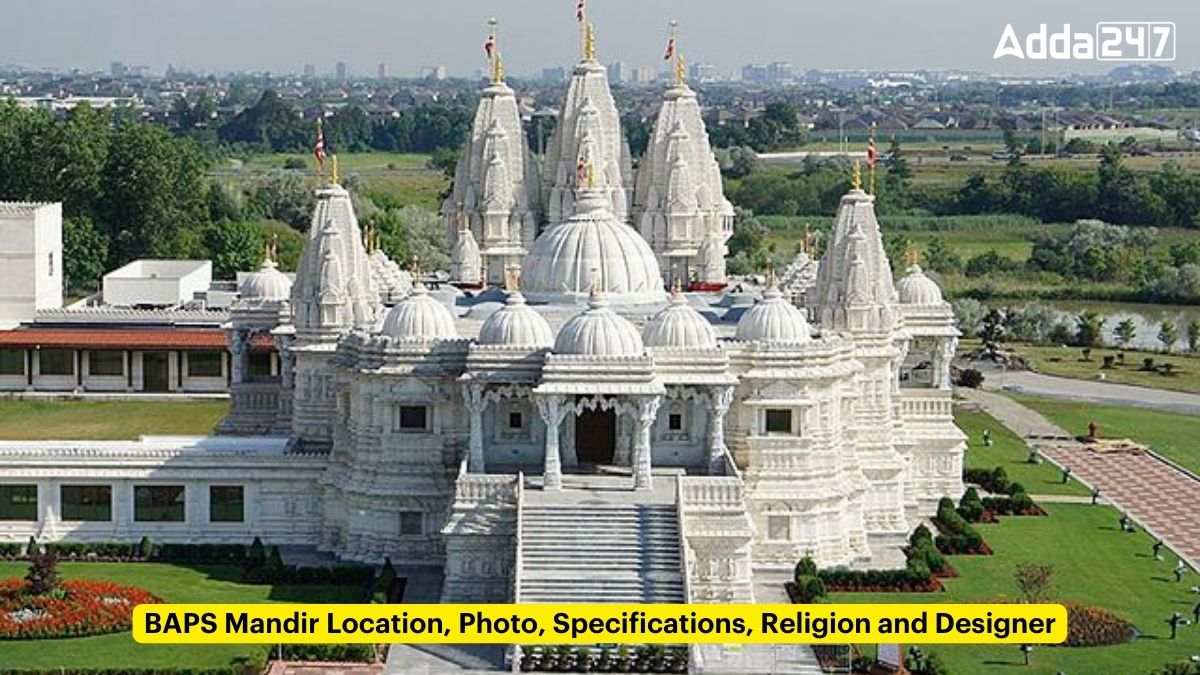The Bochasanwasi Akshar Purushottam Swaminarayan Sanstha (BAPS) Mandirs are not just places of worship but are architectural masterpieces that embody the essence of Indian culture, spirituality, and artistry. Each BAPS Mandir, standing in various locations around the world, serves as a beacon of peace, devotion, and community service. These temples, built under the guidance of the spiritual leaders of the BAPS organization, are significant for their religious importance, stunning photographs that capture their grandeur, intricate specifications, the religion they embody, and the designers and architects behind their creation.
BAPS Mandir Locations
BAPS Mandirs are scattered across the globe, with each location chosen with a vision to spread the teachings of Lord Swaminarayan and to provide a spiritual sanctuary for individuals and families. The 27 acres site is located at Abu Mureikhah, which is near Al Rahba off the Dubai–Abu Dhabi Sheikh Zayed Highway. From the shores of North America to the heartlands of India, Europe, Africa, and Australia, each BAPS Mandir stands as a testament to the global reach of the BAPS organization. Notable locations include the Akshardham complexes in New Delhi, India, and Robbinsville, New Jersey, USA, as well as temples in London, Toronto, Nairobi, and Sydney.
BAPS Mandir, Photographic Journey Through BAPS Mandirs

Photographs of BAPS Mandirs capture the breathtaking beauty of these edifices. The precision in craftsmanship, the serene landscapes that surround them, and the divine atmosphere that pervades every corner are visually represented, offering a glimpse into the spiritual haven they provide. Images of the intricately carved pillars, the majestic Gajendra Pith (a series of elephant sculptures), and the stunningly lit up temples during festivals like Diwali, allow admirers from afar to appreciate the beauty and sanctity of these places.
BAPS Mandir, Specifications That Speak of Devotion
The BAPS Hindu Mandir stands at a height of 108 feet, 262 feet in length and 180 feet in width. The construction of every BAPS Mandir adheres to ancient Vedic architectural principles, involving meticulous planning and attention to detail. These specifications are not just about dimensions and materials but are imbued with spiritual symbolism. For instance, the Akshardham temple in New Delhi spans over 100 acres, featuring a central monument made of intricately carved Rajasthani pink sandstone and Italian Carrara marble. It stands without the support of steel or concrete, a testament to ancient architectural principles. The temples are often surrounded by vast cultural complexes that include exhibition halls, IMAX theaters, water shows, and lush gardens, designed to educate and inspire visitors about Hindu culture and spirituality.
The Religion and Spirituality of BAPS Mandirs
BAPS Mandirs are rooted in the Hindu faith, specifically following the teachings of Bhagwan Swaminarayan and the lineage of Akshar Purushottam. These temples serve as centers for moral and spiritual rejuvenation, where daily rituals, prayers, and ceremonies are performed to uplift and inspire individuals towards a life of righteousness and devotion. The BAPS organization emphasizes the importance of community service, family values, and the spiritual development of the individual, which is reflected in the activities and programs offered at these mandirs.
The Visionaries and Designers Behind the Marvels
- Construction of the mandir began in December 2019 on 27 acres of land. The site is located at Abu Mureikhah, which is near Al Rahba off the Dubai–Abu Dhabi Sheikh Zayed Highway. For the construction, tonnes of pink sandstone were sent from northern Rajasthan to Abu Dhabi.
- The durable stones from the northern Indian state were selected for their ability to withstand scorching summer temperatures of up to 50 °C (122 °F), such as those sometimes experienced in the UAE. Marble from Italy is used to build the mandir. To minimise the carbon footprint, fly ash was used in the foundation’s concrete mix. This is the first Hindu traditional mandir to undergo complete digital modeling and seismic simulation.
- The architectural marvels of BAPS Mandirs are the result of the vision of Pramukh Swami Maharaj and his successors, who have inspired millions to contribute to these projects, whether through craftsmanship, donation, or volunteer service.
- The designers and architects behind these temples have managed to bridge ancient techniques with modern technology, ensuring that each mandir is not only an abode of spirituality but also a monument that stands the test of time. Notable architects like Bimal Patel have been instrumental in bringing these visions to life, ensuring that every aspect of the temple, from its layout to the minutest carvings, reflects the essence of Hindu dharma and the teachings of the Swaminarayan tradition.




 Top-10 Indian Cities with the Best AQI 2...
Top-10 Indian Cities with the Best AQI 2...
 Top-10 Must-Visit Places to Explore Near...
Top-10 Must-Visit Places to Explore Near...
 Which District of Jharkhand is Known as ...
Which District of Jharkhand is Known as ...


